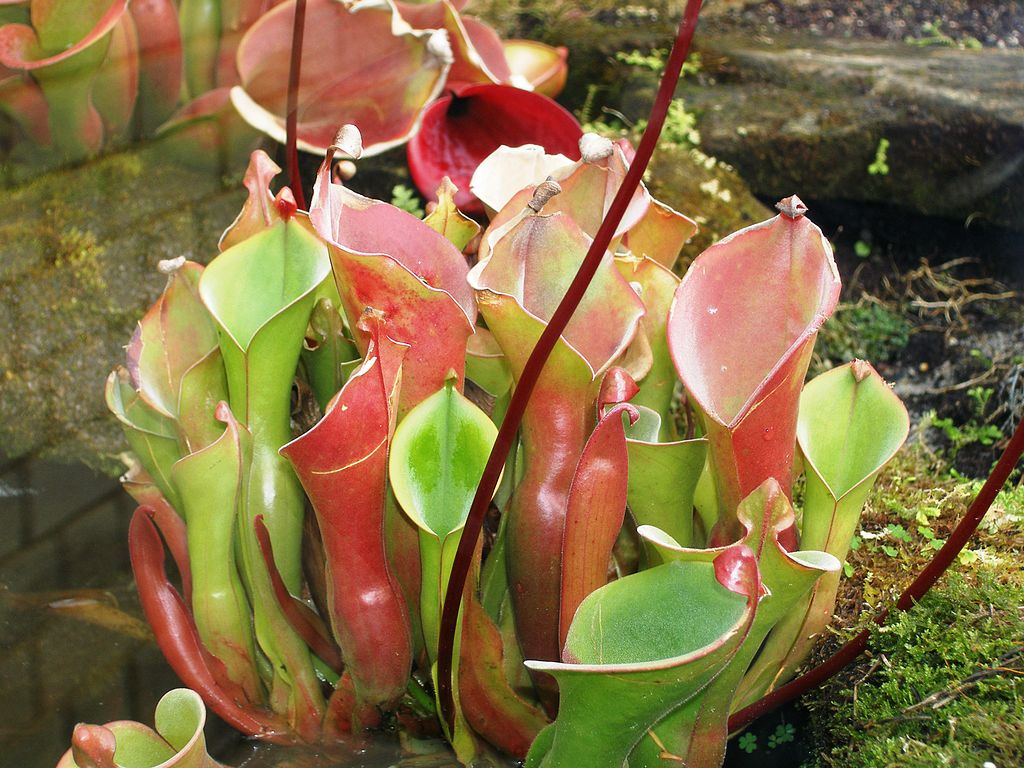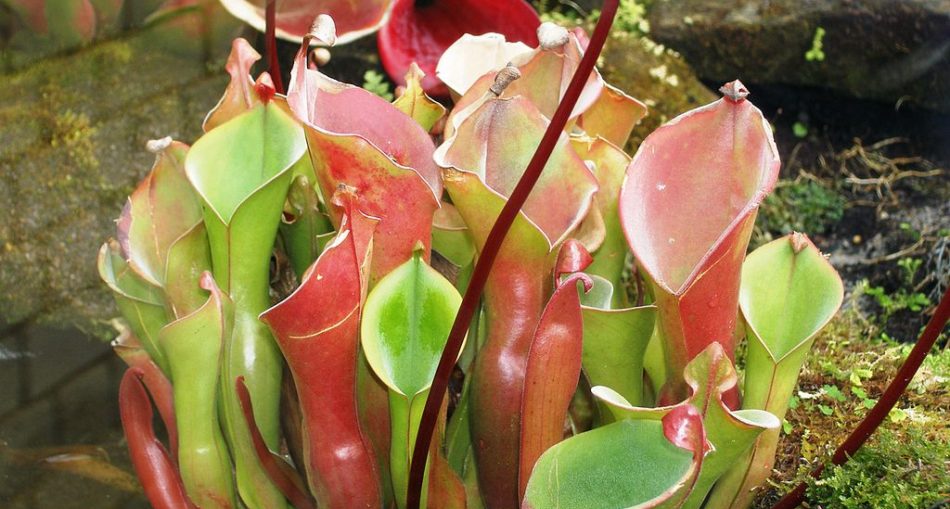Pitcher Plants are known for their predatory nature like the carnivorous sundews. They lure insects with their saccharine nectar and lead them to a watery death in their conical leaves. The Sun Pitcher Plant (Heliamphora nutans) was the very first of the genus to be discovered and is the most popular. It was discovered in 1839 on Mount Roraima by the Schomburgk brothers, Robert and Richard. While they did not gather samples for their return to Europe, they made detailed drawings which were sent to George Bentham. The specimen was later collected by David Burke in 1881, a plant collector who introduced it to England. Prior to this, in 1840, George Bentham formally gave a description of the plant, which became a species of the Heliamphora genus.
While the scientific name of the plant is Heliamphora nutans but it is known popularly as the marsh pitcher. The genus Heliamphora, was named after helos, Greek for marshland or swamp and ‘amphoreo’, meaning jar, referring to the shape of the plant. Nutans is Latin, meaning nodding, in reference to the plant’s inflorescence.

The Pitcher Plant -Photo By Dryas – Own work, CC BY-SA 3.0, https://commons.wikimedia.org/w/index.php?curid=25466033
Origin of The Sun Pitcher Plant
The Pitcher Plant is native to north-eastern South America in Guyana, Venezuela, and Brazil.
Description of The Sun Pitcher Plant
The Sun Pitcher Plant (Heliamphora nutans) is one of twenty-three (23) species of the Heliamphora genus, which are all very similar. The plant consists of a clump of conical leaves, which is produced by rhizomes. Leaves are about eight to ten inches (8-10) in height and each has an opening of about twenty to thirty (20-30) cm in diameter. The leaves, shaped like cones, also have one tiny slit which allows extra water to be drained. This species is known for its leaves, which are green outlined in red while others are only red. The stems hold red bracts with tapered flowers three to five (3-5) cm long. Flowers are white and their heads that pointed downwards. They have brown anthers in a cluster around its short styles. The seeds of the Sun Pitcher Plant have wavy ridges and are winged.
Scientific Classification Of The Sun Pitcher Plant
- Kingdom: Plantae
- Clade: Tracheophytes
- Clade: Angiosperms
- Clade: Eudicots
- Clade: Asterids
- Order: Ericales
- Family: Sarraceniaceae
- Genus: Heliamphora
- Species: H. nutans
Habitat The Sun Pitcher Plant
The Pitcher Plant thrives at elevations of one thousand two and hundred to two thousand and eight hundred (1200-2800) metres in elevation. It grows on the tepuis (table-top mountains) of Roraima, Kukenán, Yuruaní, Maringma, and Wei Assipu. It tends to grow among summit vegetation, in marshy places and wet rock sheets.
Feeding Habits Of The Sun Pitcher Plant
Pitcher Plants are carnivorous, much like the carnivorous sundews (Drosera roraimae) and feeds on insects, typically ants. The Pitcher Plant have tiny lid-like openings which secrete nectar, attracting their prey. Their prey is lured to the rim of the pitcher. While it feeds, the insect loses its grip on the plant because of downward-pointing hairs on the inner side of the pitcher. It then tumbles into the trap, drowning in the base, filled with liquid. This is known as a pitfall trap.
Facts About The Sun Pitcher Plant
- The Sun Pitcher Plant (Heliamphora nutans) was first discovered in 1839.
- The genus is only native to the tabletop mountains of north-eastern South America.
- Sun Pitcher Plants traps small insects like ants for food with pitfall traps.
- Because the Greek word ‘helos’ (swamp) is often confused with helios, meaning sun, the Heliamphora nutans was made popular by their common name, the Sun Pitcher Plant.
About The Sun Pitcher Plant
First discovered in 1939, on Mount Roraima the Heliamphora genus now consists of twenty-three (23) species which grow only in parts of South America, like Guyana. The Sun Pitcher is breathtakingly beautiful but is just as sneaky. Most persons use it as a decorative piece and many are unaware of its carnivorous habits. If you ever find yourself on the top of Mount Roraima or any table-top mountain in the region, remember to keep an eye out for the Sun Pitcher Plant!
Article References
- https://en.wikipedia.org/wiki/Heliamphora_nutans
- http://plantsoftheworldonline.org/taxon/urn:lsid:ipni.org:names:790110-1
- http://guyanainc.biz/daily-updates/natural-world-marvels-the-pitcher-plant/
- https://carnivorousplantresource.com/the-plants/sun-pitcher-plant/#:~:text=Sun%20Pitcher%20plants%20produce%20no,are%20absorbed%20by%20the%20plant.







